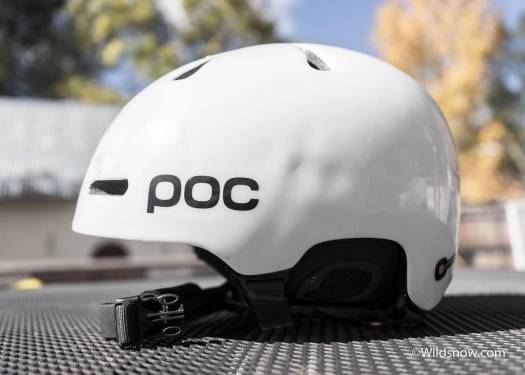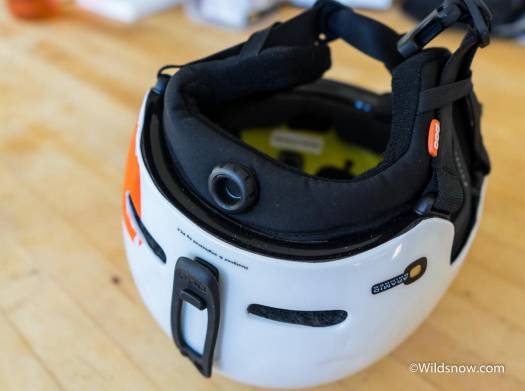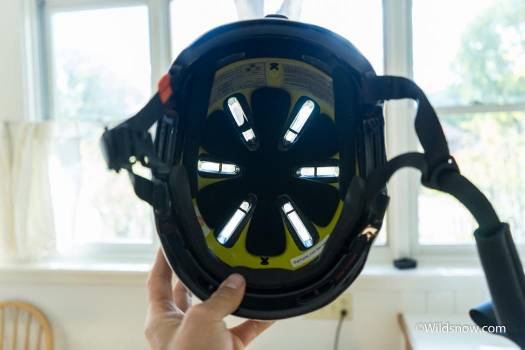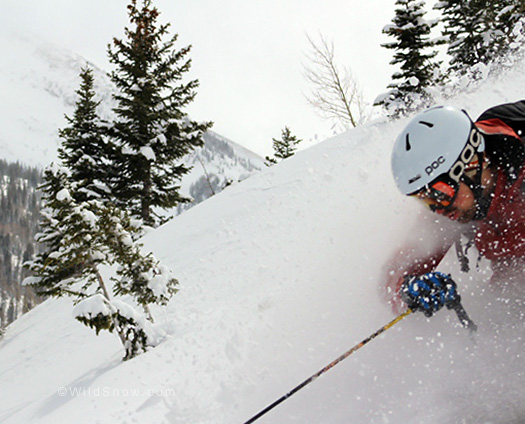 Enjoying Colorado powder last winter with the POC Fornix MIPS.
Enjoying Colorado powder last winter with the POC Fornix MIPS.
Opinions vary on using helmets for backcountry skiing. In a sport where weight and bulk are high priorities, a lightweight hat seems to often be the headwear of choice. Also, there’s controversy over whether helmets really provide that much protection (more about helmets). I’m a fan of helmets, and bring one on almost every ski trip. But I also pay attention to the reality of how much or how little protection “ski” helmets offer, so when one comes along that claims maximum protection, I tend to use it.
I’ve had a POC Synapsis helmet for the past few years (previous review here), which has easily seen 50+ days of use every season. The ultra-light helmet held up surprisingly well, but after four years, it was obviously time to retire it.
On spring and summer ski trips I often ski with a light climbing helmet (Petzl Sirocco is my current favorite), instead of a full-on ski helmet, especially if I’m in for some sort of suffer-fest where a light pack is the only thing keeping me from dropping to all fours at the end of the day. A climbing helmet is of course lighter, and has much better ventilation, so it can be used on the climb, not only the descent–omething that is necessary during the spring, when rockfall is often a concern. However, climbing helmets don’t provide the same protection as ski helmets; they don’t protect the sides and back of your head — the areas most likely to hit in a fall. Accordingly, if it’s cold enough out, and I’m not going for a mega-day, I’ll bring a ski helmet.
POC helmets have been at the top of the personal protection game for several years, combining high-tec materials with impeccable Swedish design (and an equally high Swedish price tag). Although they still make the Synapsis that I’ve had for a few years, I decided to try out a new dome this time around, and went with the Fornix Backcountry.
Like the Synapsis, the Fornix Backcountry is a POC helmet aimed at backcountry skiers. The helmet is mainly attractive due to the low weight, but it also has several features that offer more safety than many helmets. The helmet is fairly similar to my old helmet, with a few extra safety features, as well as better adjustability. Compared to the Synapsis, the extra safety and features cost a tiny bit more weight (440 vs. 428 g).
The Fornix has POCs MIPS (Multi-Directional Impact Protection System). The MIPS is basically a layer in the helmet that allows the shell to rotate in relation to the rest of the helmet, reducing an impact that doesn’t strike the helmet directly more about that technology here. Another safety feature is POC’s incorporation of Aramid fibers into the shell, which simply allows them to make a strong helmet with less weight and more ventilation holes.
The Fornix also has a more substantial ventilation system than the Synapsis, with six large adjustable vents on top, and two more in the front and rear. However, when it comes to skinning, most ski helmet ventilation systems are a bit of a joke, and the Fornix system is only slightly better. For warmer days, the earflaps and some of the padding in the Fornix can be removed, making the helmet actually cool enough to wear.
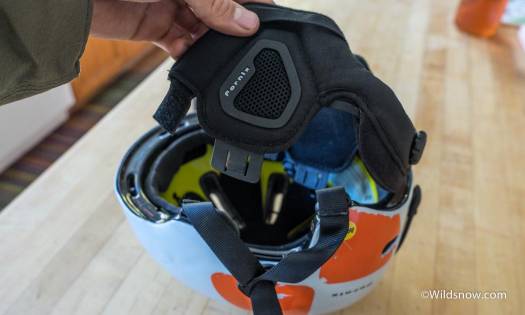
The side flaps can be removed from the Fornix. This reduces the weight from 440 to 370 g, and also makes the helmet much cooler.
Beyond the possibility of added safety, an advantage of the Fornix is its exceptionally low weight. That becomes even more impressive since the design doesn’t skimp on features that improve the safety and usability of the helmet. A major way POC reduces mass is to make the helmet with an in-molded EPS shell (like many helmets), as opposed to a heavier molded plastic shell. Unfortunately that makes the helmet much less durable and prone to dents. I’m pretty careful with the helmet; ironically I often make sure it’s wrapped in something protective, especially when I’m traveling.
I’ve used the Fornix all last winter and spring skiing in the Cascades, as well as this summer in South America. It survived branch-bashing tight pillow lines around Baker (with only a few dings), and several trips on planes, buses, and subways in SA. It’s held up well, with only a few dents in the shell (expected of an in-molded EPS helmet). For the trip down south, I took the ear flaps out and left them at home to reduce a little weight. This allowed me to comfortably keep the helmet on while booting couloirs and other rock-fall prone areas. When I needed warmth, I wore a thin wool hat under the helmet.
The POC Fornix is an excellent choice for backcountry skiing. The minimal weight and high-tec protection, combined with the ability to change into “cool down mode” for spring days make it an ideal combo.
Shop here for POC Fornix.
Louie Dawson earned his Bachelor Degree in Industrial Design from Western Washington University in 2014. When he’s not skiing Mount Baker or somewhere equally as snowy, he’s thinking about new products to make ski mountaineering more fun and safe.

